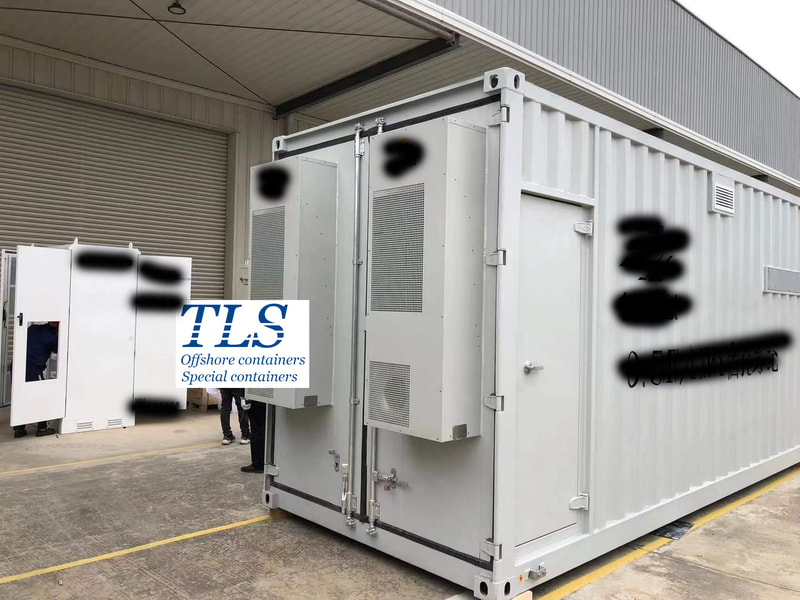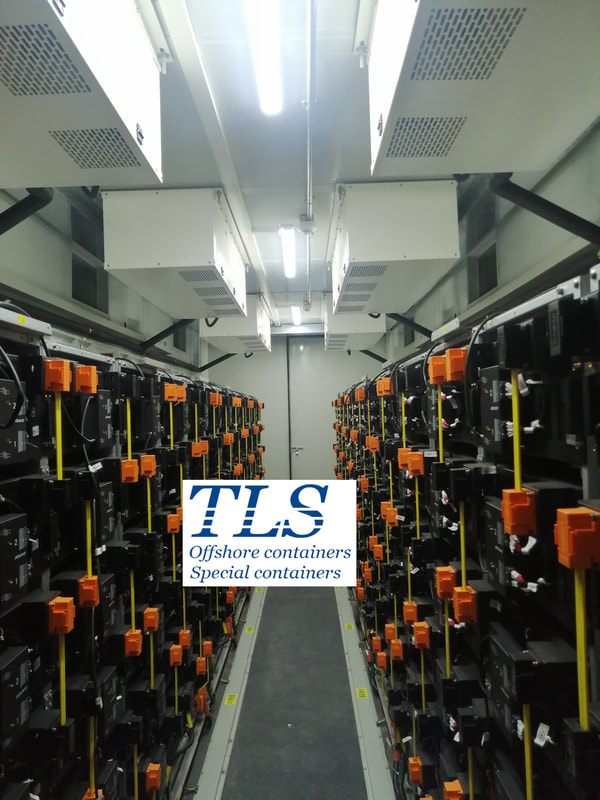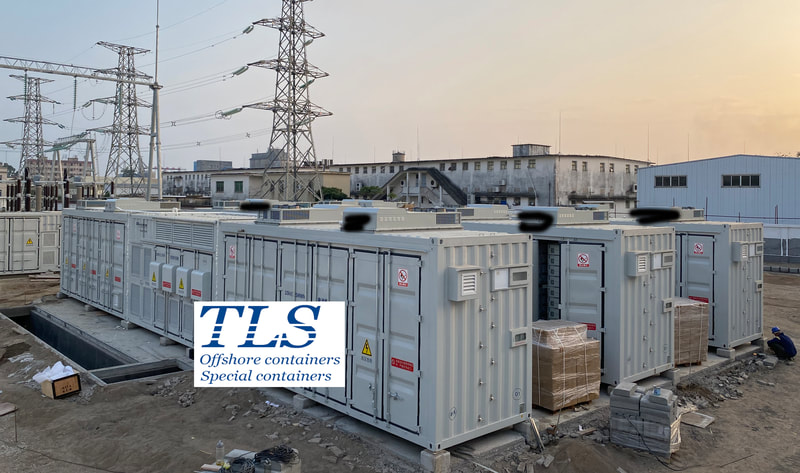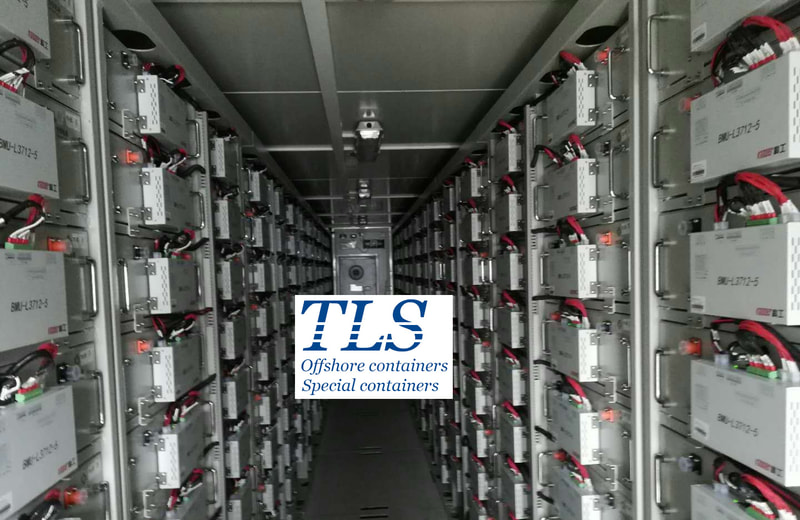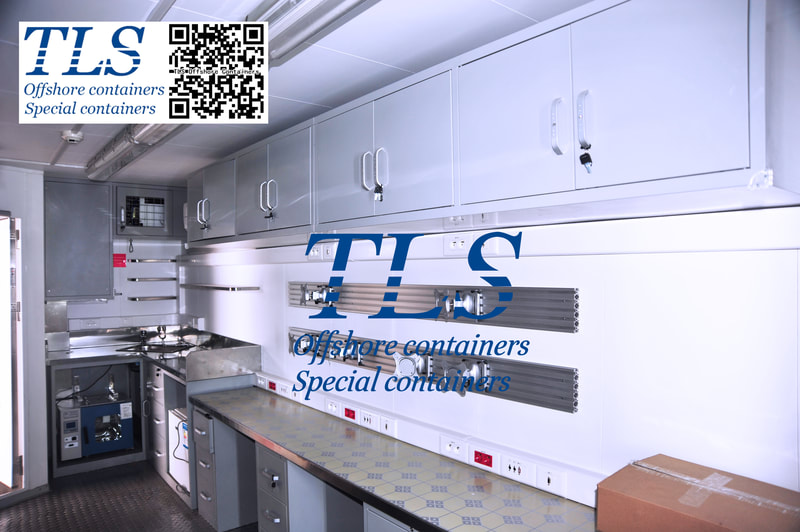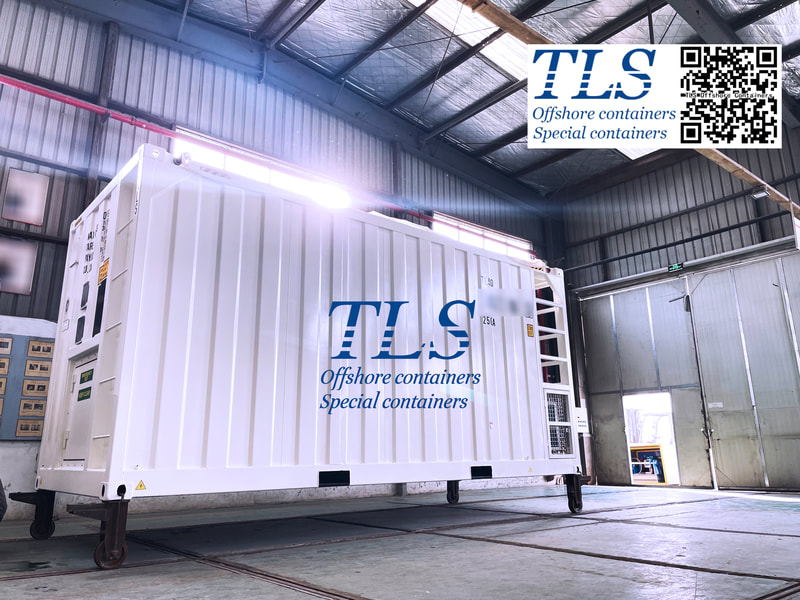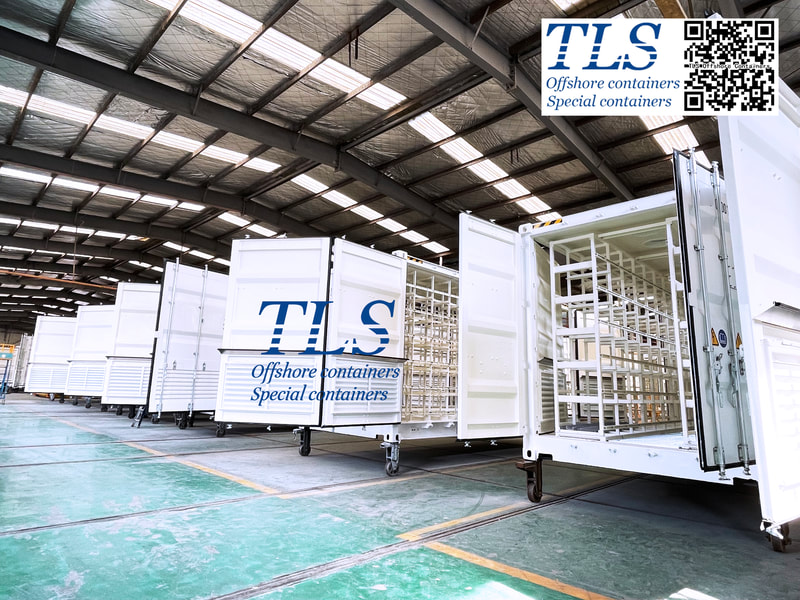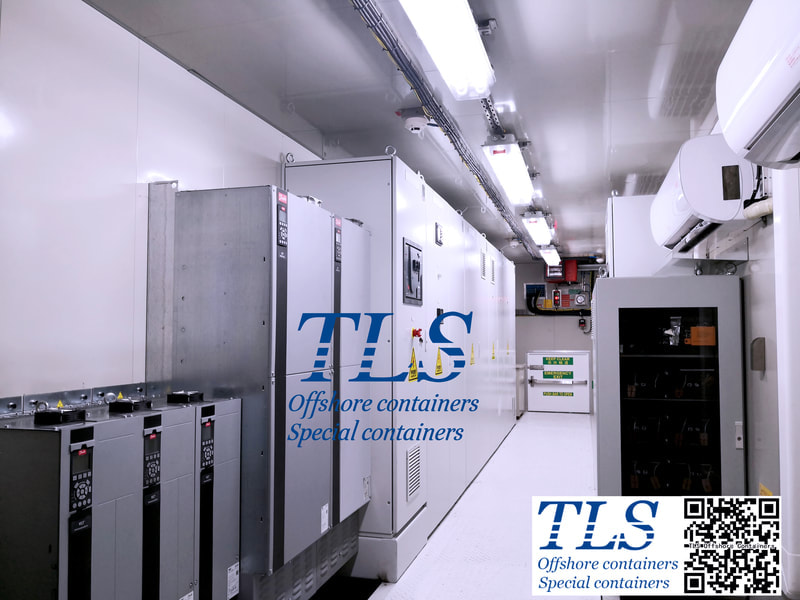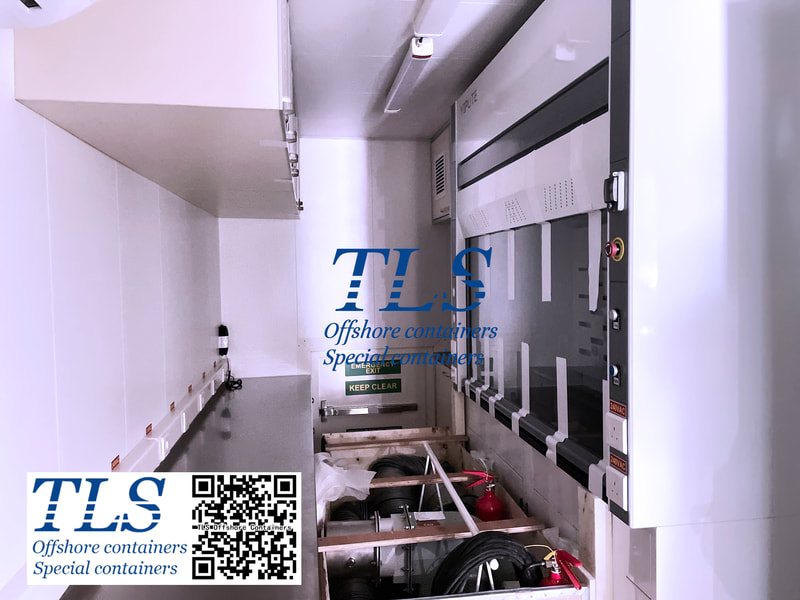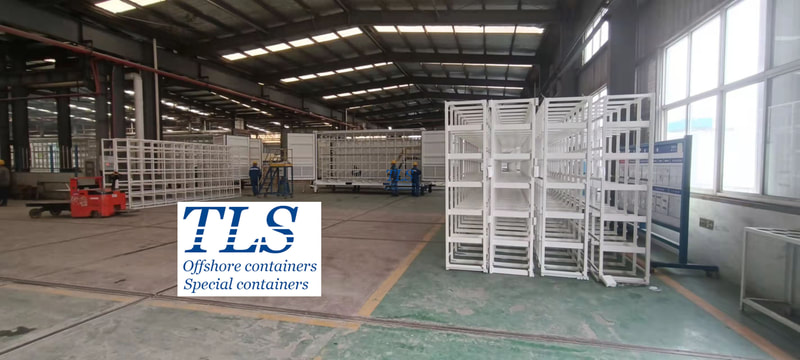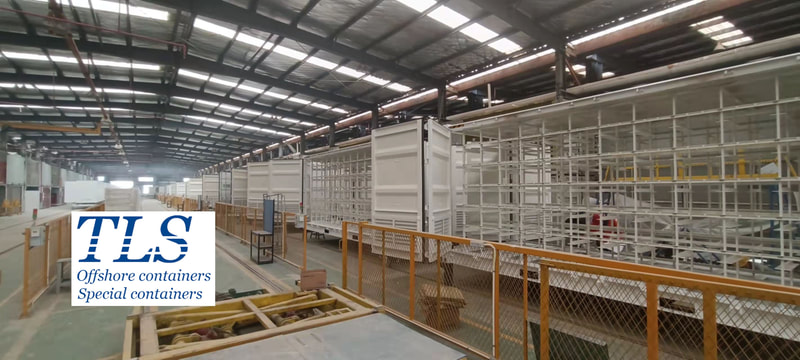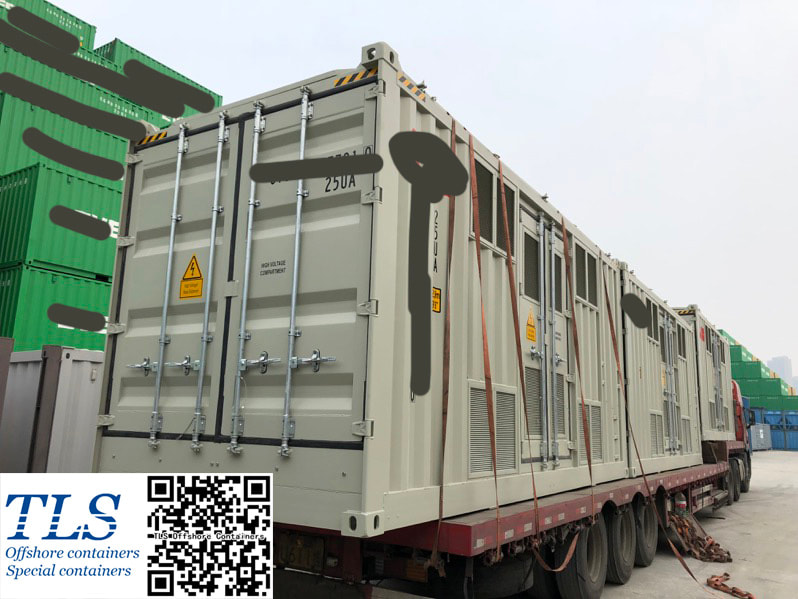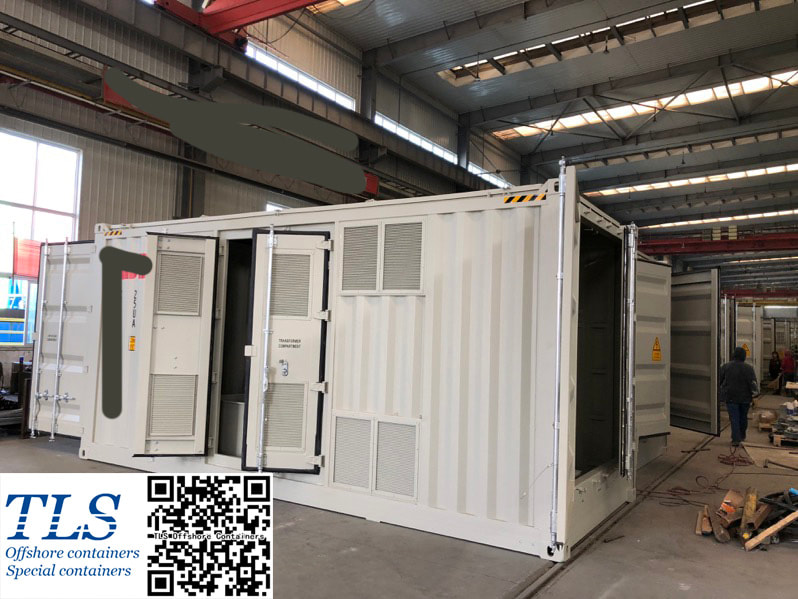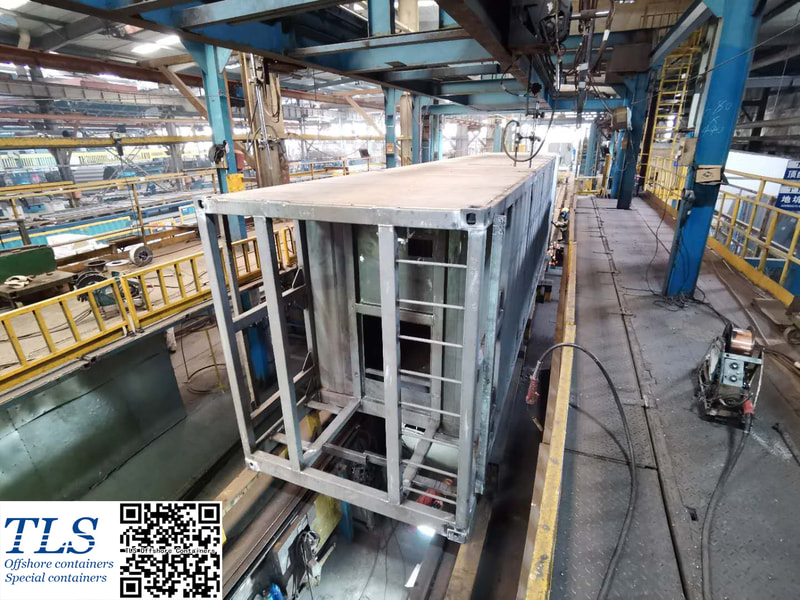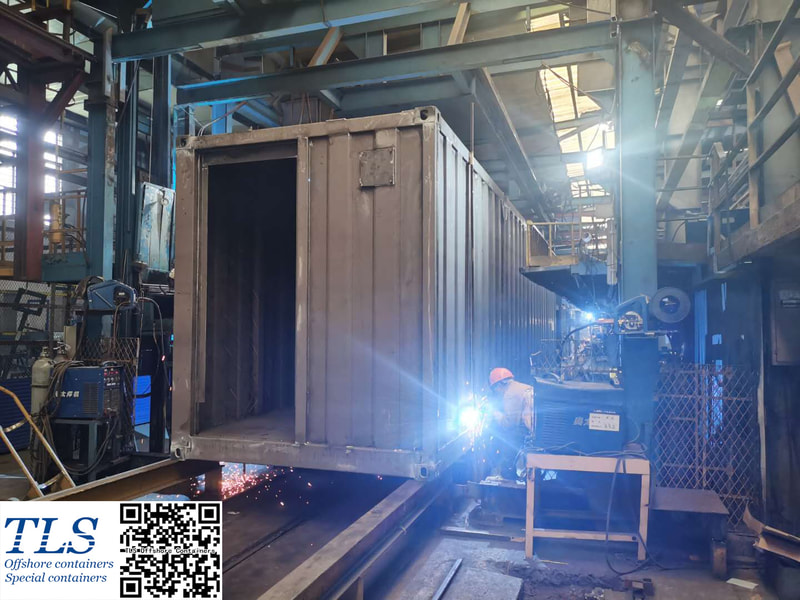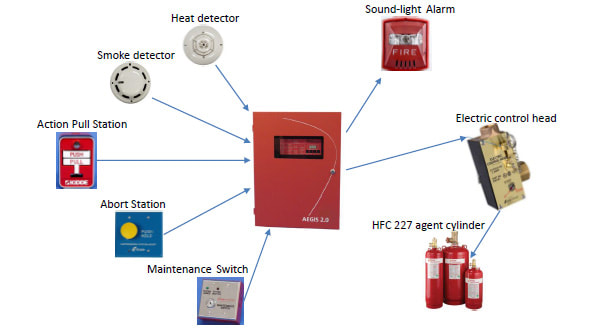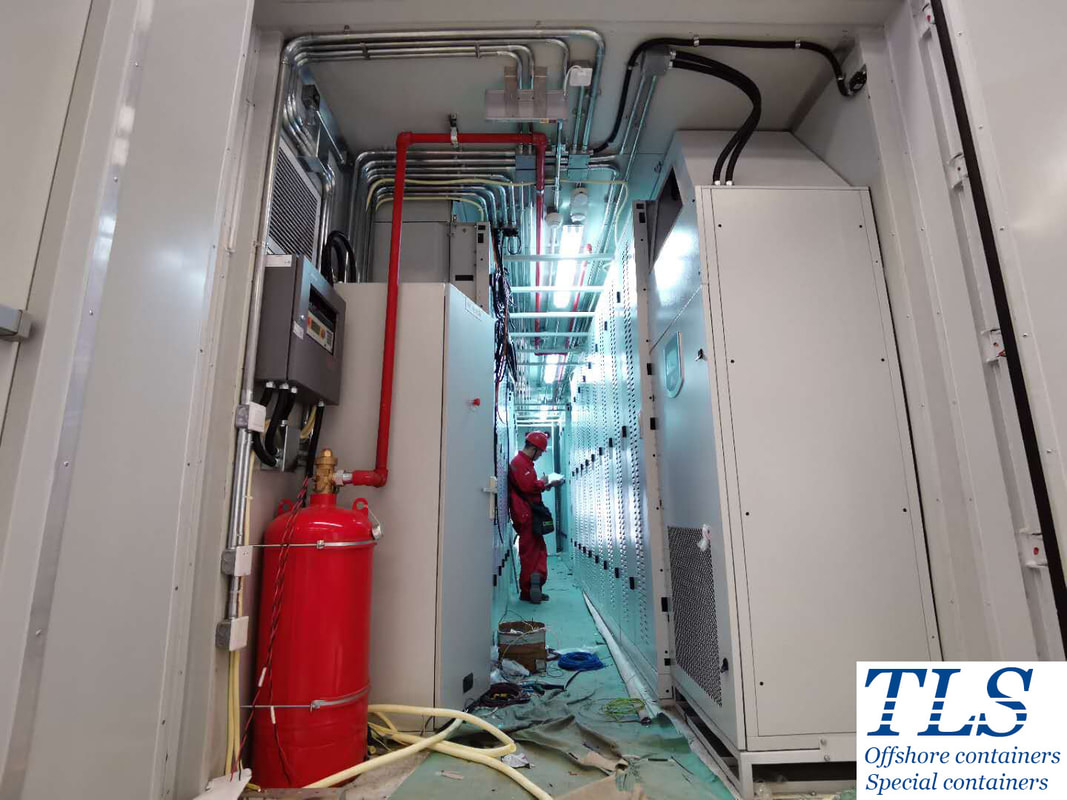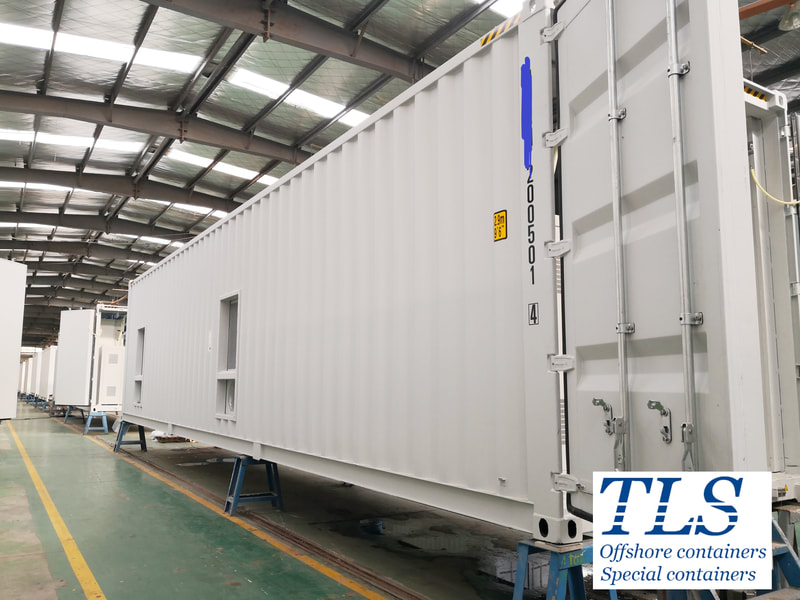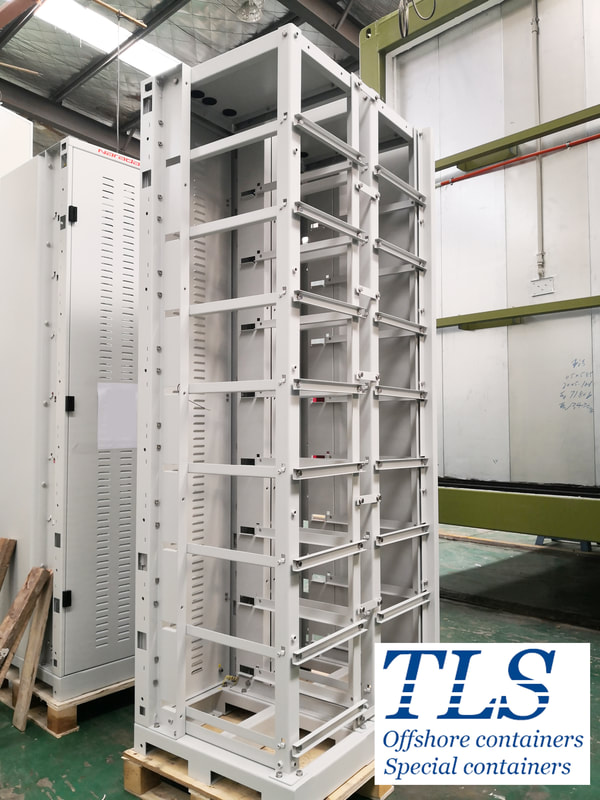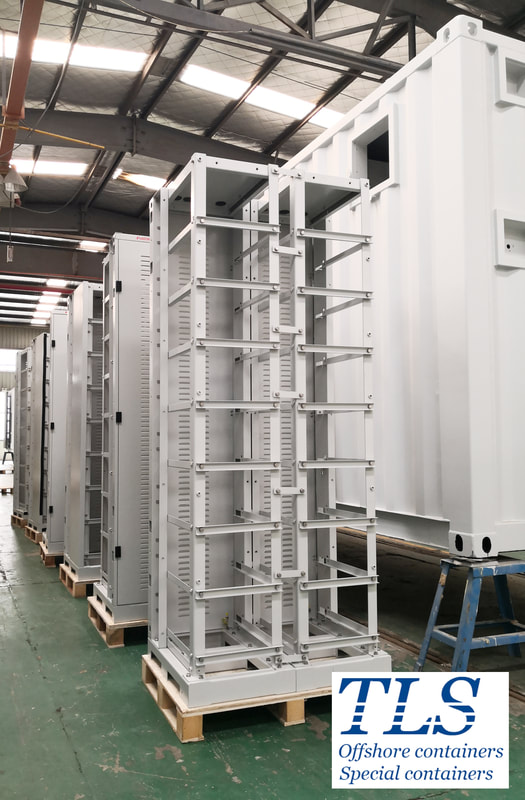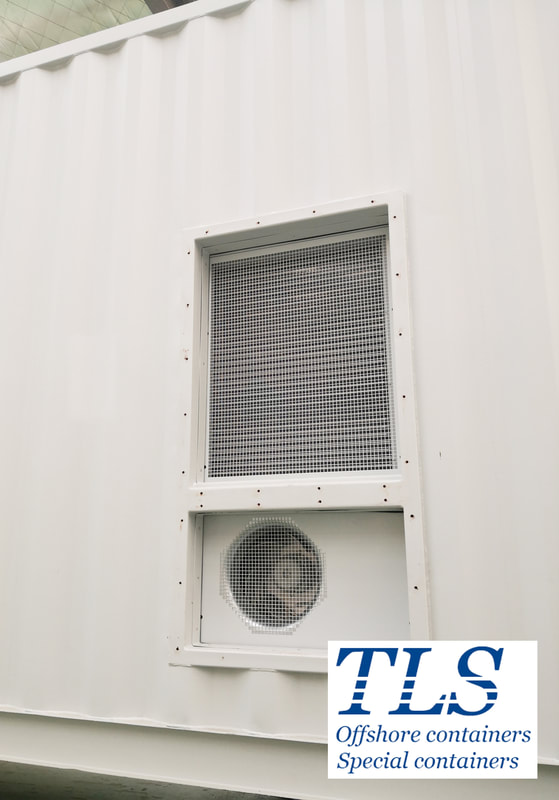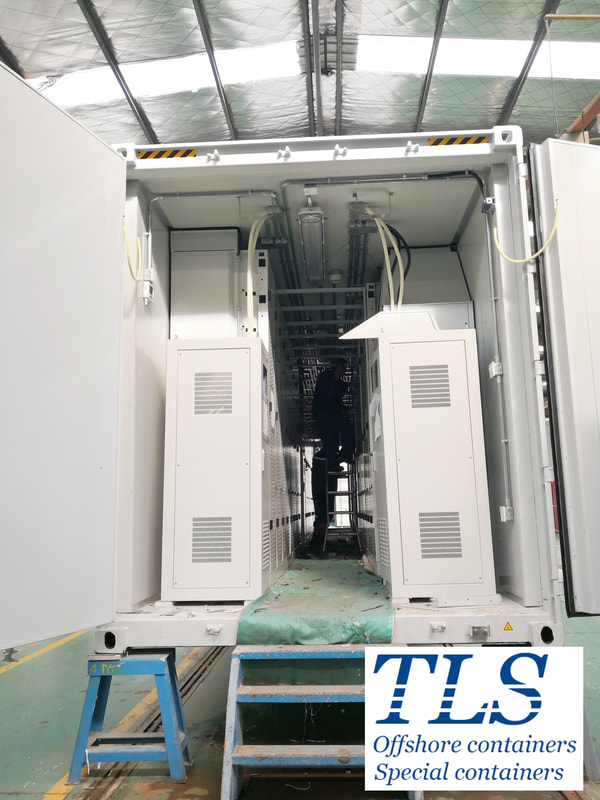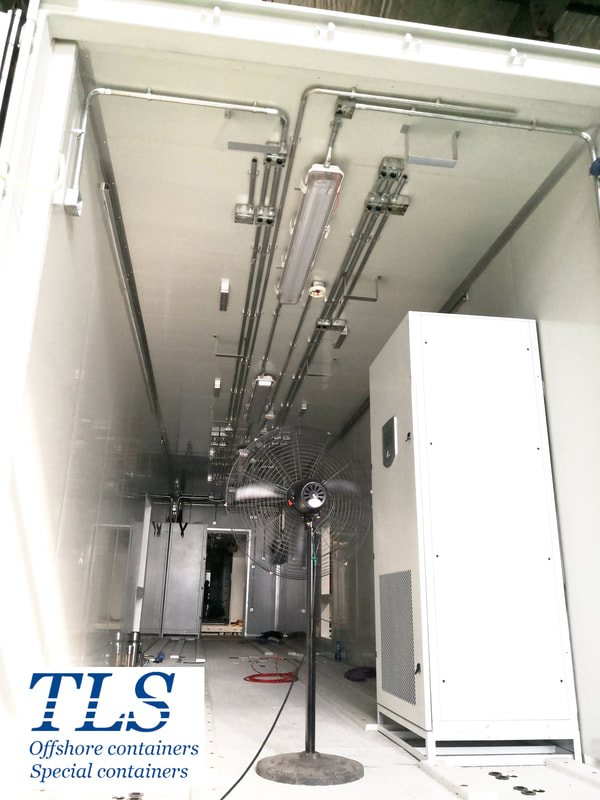|
Battery energy storage system containers Taking the 1MW/1MWh energy storage system container as an example, the system generally consists of an energy storage battery system, a monitoring system, a battery management unit, a special fire protection system, a special air conditioner system, an energy storage converter and an isolation transformer, and is finally integrated in a 40-foot container. The battery system is mainly composed of cells in series and parallel: first, a dozen groups of cells are connected in series and parallel to form a battery box, then the battery boxes are connected in series to form a battery string and increase the system voltage, and finally the battery strings are connected in parallel to increase the system capacity, and Integrated installation in the battery cabinet. The monitoring system mainly monitors the functions of external communication, network data monitoring and data acquisition, analysis and processing, ensuring accurate data monitoring, high voltage and current sampling accuracy, data synchronization rate and fast execution speed of remote control commands; the battery management unit has high-precision monomers. The voltage detection and current detection functions ensure the voltage balance of the battery modules and avoid circulating currents between the battery modules, which affects the operating efficiency of the system. In order to ensure the safety of the system, the container is equipped with a special fire protection and air conditioning system. The fire protection system senses the fire through smoke sensors, temperature sensors, humidity sensors, emergency lights and other safety equipment, and automatically extinguishes the fire; the special air conditioning system according to the external environment temperature, The cooling and heating system of the air conditioner is controlled by the thermal management strategy to ensure that the temperature in the container is in a suitable range and prolong the service life of the battery. The energy storage converter is an energy conversion unit that converts battery DC power into three-phase AC power, which can operate in grid-connected and off-grid modes. In grid-connected mode, the converter interacts with the power grid according to the power command dispatched by the upper layer; in off-grid mode, the energy storage converter can provide voltage and frequency support for the plant load, and provide black-start power for some renewable energy sources. The outlet of the energy storage converter is connected to the isolation transformer, so that the electricity of the primary side and the secondary side is completely insulated, and the safety of the container system is guaranteed to the greatest extent. Mobile energy storage systems have been widely used in power system transmission, distribution and other fields due to their outstanding flexibility and convenience. Compared with the traditional fixed energy storage power station, the modular design of the container energy storage system adopts the internationally standardized container size, which allows ocean and road transportation, and can be hoisted by overhead cranes, with strong mobility and no geographical restrictions. In addition, the container energy storage system can be produced in a factory, and can be assembled and debugged directly in the workshop, which greatly saves the construction and operation and maintenance costs of the project, and monitors accident isolation. It is believed that with the continuous breakthrough of battery technology, the energy density of mobile energy storage systems will be further improved, and the cost will be greatly reduced. The actual value of mobile energy storage systems will continue to be reflected, and the scope of application will continue to expand. It will become an important carrier to promote the revolution of energy production and consumption, and it is a technology and industry with great development prospects in the energy Internet. Key words: #BESS container #BESS TLS Offshore Containers / TLS Special Containers is a global supplier of standard and customised containerised solutions with a 150,000 square meters manufacturing base located in China, which allows TLS to provide the most cost-effective and complete containerised solutions to worldwide clients. Any requirements about Battery Energy Storage System Container |Accommodation Cabin |Workshop Container |Temporary refuge (TR) shelter |MWD/LWD cabin |Reefer container |Sewage treatment plant container etc, please don’t hesitate to contact us. We will provide professional design solutions and high-quality services. All the production process we will have a dedicated team to follow up to ensure product quality. E-mail: sales@tls-containers.com Hotline: +65-65637288; +65-31386967 Battery Energy Storage Container(BESS), It is applied to industrial and commercial energy storage, distributed energy system, and microgrid system. The energy storage device, which integrates a lithium-ion battery system, energy conversion system, energy management system, monitoring system, temperature control system, and fire control system, can be customized according to customer requirements. If you have any inquiries on BESS containers, please download the check list and send it together with your inquiry. Don’t hesitate to contact us for more information about the battery energy storage system container, We are eager to explain the possibilities for your applications. Please download Energy Storage System (ESS) Containers brochure for reference. BESS container fabrication and delivery, battery container, battery energy storage system container7/28/2021
The Battery energy storage system (BESS) container are based on a modular design. They can be configured to match the required power and capacity requirements of client’s application. The battery energy storage systems are based on standard sea freight containers starting from kW/kWh (single container) up to MW/MWh (combining multiple containers). The containerised energy storage system allows fast installation, safe operation and controlled environmental conditions. The energy storage system (BESS) containers are designed for neighbourhoods, public buildings, medium to large businesses and utility scale storage systems, weak- or off-grid, e-mobility or as backup systems. The energy storage system containers make it possible to store the energy produced by photovoltaics, wind turbines, or CHP. Due to its high cycle lifetime, The energy storage system containers are also used for peak-shaving, thereby reducing the electricity bill. Our containerised energy storage system (BESS) is the perfect solution for large-scale energy storage projects. The energy storage containers can be used in the integration of various storage technologies and for different purposes.
Lithium battery fires are mainly the result of the decomposition and burning of electrolyte, which is a kind of hydrocarbon gas burning fire. In the case of battery overheating, excessive charging and discharging, battery design defects and short circuits caused by raw material defects, chemical reactions occur between battery materials inside the battery, and the electrolyte decomposes to generate a large amount of heat and gas, resulting in thermal runaway of the battery. The thermal runaway is the main reason for the burning of the electrolyte. Once thermal runaway occurs, the battery temperature rises rapidly, directly causing the battery material to burn. When the concentration of flammable gas produced by the decomposition and combustion of the lithium battery electrolyte reaches a certain level, it will explode when it encounters an open flame. In large-scale battery energy storage containers, the battery packs have the characteristics of high density and centralized distribution. The lithium battery modules are connected in series to form a single battery pack and multiple battery packs. A large-capacity energy storage unit is formed in parallel, which not only increases the probability of lithium battery failure, but also increases the fire spread channel because the battery cannot be cut off in the event of a fire. There are a large number of auxiliary electrical equipment in the lithium battery energy storage container. The unsafe use of these equipment also increases the overall fire risk of the storage container, such as accidental high voltage and large current (lighting, surge) intrusion. High voltage and high current invade the lithium battery energy storage container. On the one hand, the electronic equipment in the lithium battery energy storage container is highly integrated, which reduces its resistance to high voltage and high current; on the other hand, the system uses a large number of communication lines have added channels for high voltage and high current intrusion. At the same time, the failure of the protection element is also one of the important causes of fire. Long-term heating and ultra-high temperature caused oxidation and corrosion of some electrical components in the cabinet, and aging of some insulating materials. The overcurrent protection in the battery, the DC fuse and the overcurrent fuse in the battery failed to effectively isolate the short circuit fault and could not meet the original design resistance and insulation. Therefore, the overall electrical safety of the lithium battery energy storage container system has a large hidden danger, and it will cause the spread of fire. When a lithium battery burns, a large amount of gas is generated, mainly organic gases such as hydrogen, carbon monohydride, carbon dihydride, methane, benzene, and toxic gases such as hydrogen chloride and hydrogen fluoride. In the event of a fire, the hydrogen, carbon monohydride and other combustible gases released by the lithium battery inside the lithium battery energy storage container under high temperature conditions cannot be effectively controlled, which may cause the fire to spread rapidly or even explode, endangering the main electrical equipment, and causing property damage. The fire extinguishing system in Lithium battery energy storage container adopts non-conductive suspension type, cabinet type or pipe network type heptafluoropropane (HFC) fire extinguishing system. At the same time, a nitrogen fire extinguishing system is also arranged. The lithium battery energy storage container gas fire extinguishing system consists of heptafluoropropane (HFC) fire extinguishing device, pressure relief device, gas fire extinguishing controller, fire detector and controller, emergency start stop button and isolation module, smoke detector, sound and light alarm, etc. to realize automatic detection, alarm, and fire protection functions in the protection zone. In the containerized lithium battery energy storage system, each container is a protection area, when smoke or temperature change is detected, the sound and light alarm will immediately respond to the fire. Extinguishing the fire in the early stage ensures the safety of the energy storage container. At the same time, considering the processing method of the collected signals, to increase the number of audible and visual alarms and arrange them in places where there are frequent patrols and guards. At the same time, considering that lithium battery energy storage containers are prone to explosion, according to the characteristics of different lithium batteries, the corresponding explosion-proof system is configured according to the characteristics of different lithium batteries. The fire extinguishing system is also inter-connected with the controller, the fan, power supply, etc. and transmit the fire signal to the fire control centers. The energy storage system (ESS) containers are based on a modular design. They can be configured to match the required power and capacity requirements of client’s application. The energy storage systems are based on standard sea freight containers starting from kW/kWh (single container) up to MW/MWh (combining multiple containers). The containerised energy storage system allows fast installation, safe operation and controlled environmental conditions. The battery energy storage system (BESS) containers are designed for neighbourhoods, public buildings, medium to large businesses and utility scale storage systems, weak- or off-grid, e-mobility or as backup systems. The energy storage system containers make it possible to store the energy produced by photovoltaics, wind turbines, or CHP. Due to its high cycle lifetime, The energy storage system containers are also used for peak-shaving, thereby reducing the electricity bill. Our containerised battery energy storage system (BESS) is the perfect solution for large-scale energy storage projects. The energy storage containers can be used in the integration of various storage technologies and for different purposes. All our containerised solutions are designed to meet the most demanding specifications and can to cope with all kinds of adverse conditions. In the case of storage in batteries the container are mechanically adapted to integrate the air conditioning equipment that allows energy storage according to the project. These solutions provide greater flexibility and robustness to renewable power production systems. TLS has also integrated stations for energy storage projects with: super-capacitors, lithium ion batteries, hydrogen storage and hybrid technologies. The extensive experience accumulated by TLS, and our passion for tackling modern technological challenges, makes it possible to undertake any energy storage project. As the wave quality stations that improve the quality of the electric energy supplied by the generation source or the stations intended for the electric power injection when the main supply is interrupted, allowing to synchronise several emergency and power equipment at the same time, both in DC and AC. |
Archives
May 2024
Categories
All
|
- Home
-
Containerised solutions
- Intelligent pressurised container | MUD logging cabin
- Battery energy storage system (BESS) container
- Flexible grid tied battery storage system
- Laboratory container | workshop container | Equipment containers
- Temporary refuge shelter | Toxic gas refuge | Safe haven
- Offshore accommodation cabin | office container
- Reefer container | Refrigerated container
- Intelligent waste water treatment container
- Fresh water generator container
- Cargo Containers
- Product photos & videos
- News & Blogs
- Contact us
|
Featured products
Intelligent pressurised container Temporary refuge (TR) shelter, toxic gas refuge (TGR) Battery energy storage system (BESS) container Containerised waste water treatment plant Fresh water generator container Reefer container Laboratory container, Workshop container Accommodation container Offshore closed container |
All Rights Reserved 2020 © TLS Offshore Containers / TLS Energy
|

